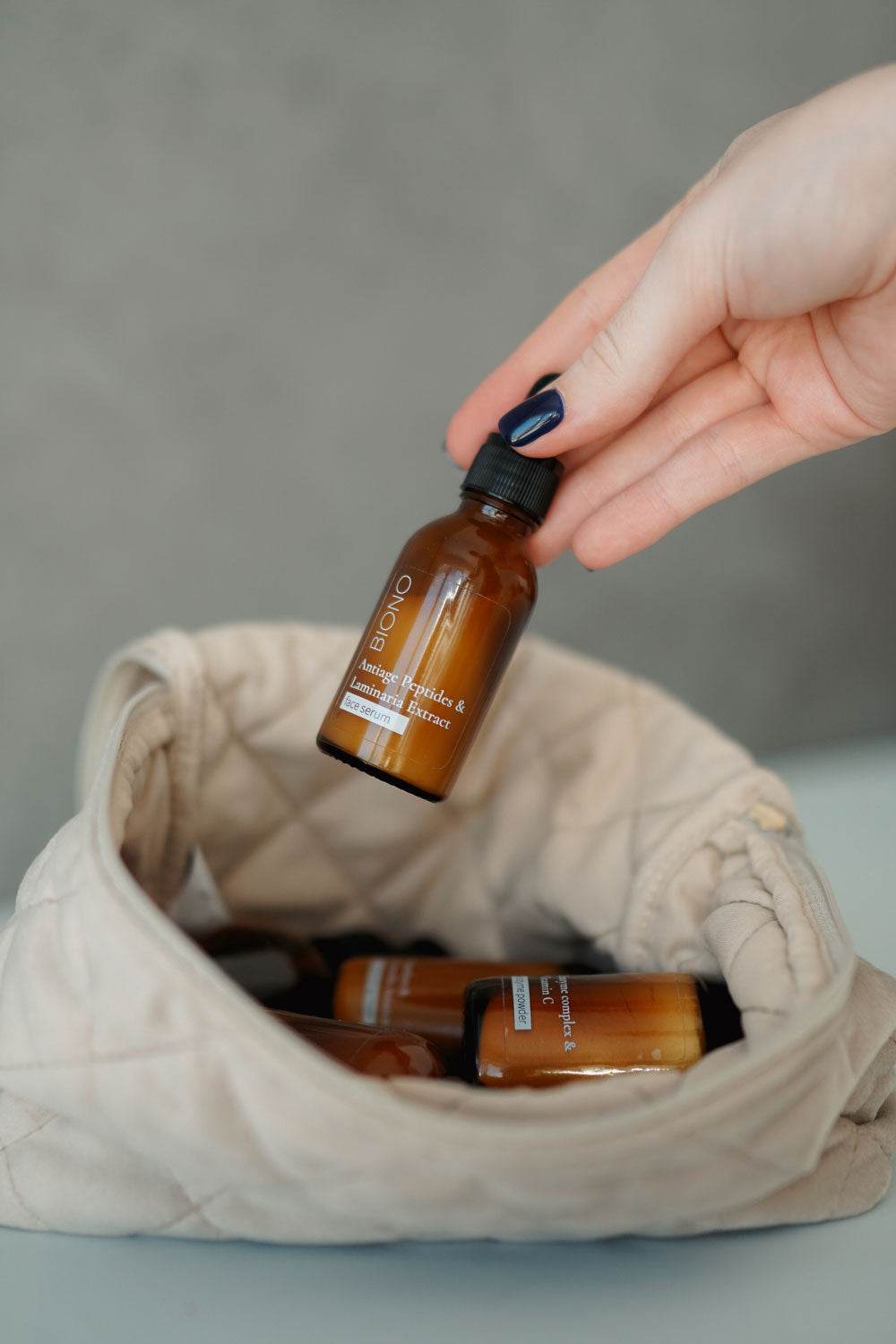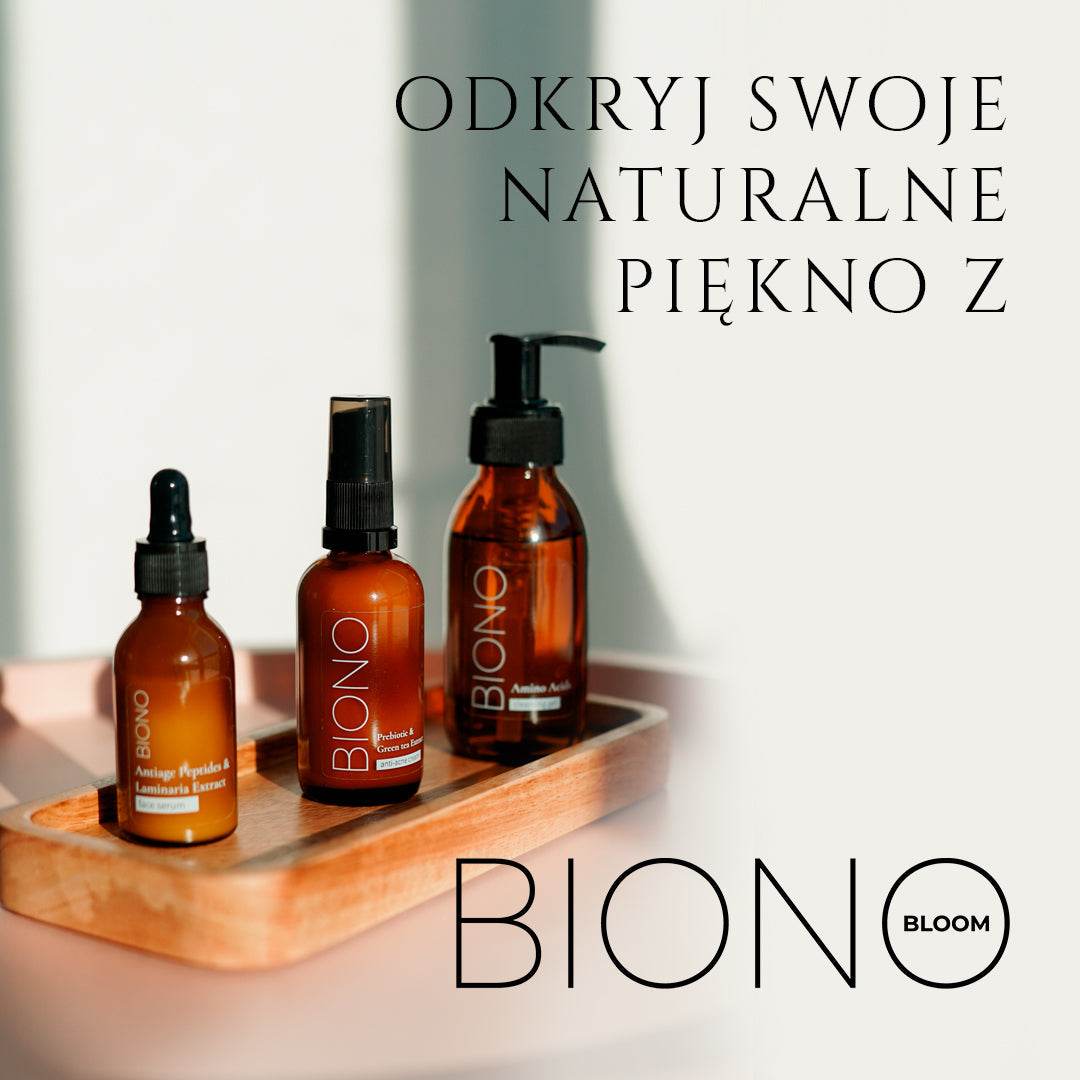
Enzymatic face powder: a revolution in gentle skin cleansing.
Share
Modern cosmetology is constantly searching for methods that combine effectiveness with gentleness for the skin. This natural enzymatic exfoliant in the form of a face powder addresses the needs of people with sensitive skin who require deep cleansing without the aggressive effects of traditional mechanical exfoliants. This innovative product harnesses the power of natural enzymes to dissolve dead skin cells, offering additional nourishing and regenerative benefits for all skin types.
What are enzymes in cosmetics and how do they affect the skin?
Enzymes are natural biochemical catalysts that accelerate chemical reactions in living organisms. Cosmetics primarily utilize enzymes derived from tropical fruits, such as papain from papaya, bromelain from pineapple, or actinidain from kiwi. A natural enzymatic peel contains these substances in a stable, dry form, which is activated only upon contact with water.
The mechanism of action of enzymes in skincare involves the selective breakdown of keratin proteins in dead epidermal cells. Unlike acids, which can attack living tissue, enzymes recognize only damaged or dead cellular structures, making them exceptionally safe for even the most sensitive skin. This process is called selective proteolysis.
An additional benefit of enzymes is their anti-inflammatory and antioxidant properties. Bromelain has soothing properties, while papain supports the healing process of minor skin damage. These natural ingredients not only cleanse but also nourish the skin during the treatment, a significant advantage over aggressive exfoliation methods.

Advantages of natural peeling over traditional scrubs
The main advantage of natural enzymatic exfoliation is its exceptional gentleness while remaining highly effective. Traditional mechanical exfoliators with abrasive particles can cause micro-damage to the skin, especially with overly vigorous massaging. This gentle exfoliating powder works biochemically, requiring no mechanical friction, eliminating the risk of irritation and inflammation.
Controlling the intensity of the action is another significant advantage of natural enzymatic exfoliation. The exposure time can be easily adjusted to suit your skin's needs – from a gentle 2-minute cleanse for sensitive skin to an intensive 10-minute treatment for oily and problem skin. This flexibility allows you to personalize your treatment according to your current skin condition.
The versatility of this gentle exfoliating powder distinguishes it from other exfoliating products. It can be used by people with various skin types, including those with dermatological conditions such as rosacea or atopic dermatitis. The natural origin of the enzymes minimizes the risk of allergic reactions, although a patch test is always recommended before first use.
Main advantages of enzyme powder:
- Gentle action without damaging healthy skin
- Possibility to control the intensity by application time
- Anti-inflammatory and calming effect
- Versatile for different skin types
- No risk of mechanical micro-damage
Composition and types of enzyme powder available on the market
The basic ingredient of enzyme face powders is, of course, the enzymes themselves, usually in a freeze-dried form for stability. Papain, bromelain, and subtilisin are the most common forms, each with a slightly different spectrum of action. Papain is the gentlest and best suited for sensitive skin, bromelain is more potent and additionally has anti-inflammatory properties, and subtilisin provides the most intense exfoliation.
Modern enzyme powder formulas are enriched with additional active ingredients. Low-molecular-weight hyaluronic acid provides hydration during the treatment, vitamin C provides antioxidant benefits, and green tea extract soothes irritations. Some products also contain gentle fruit acids in low concentrations to enhance the exfoliating effect.
Texture and preparation methods vary between brands. Some powders require thorough mixing with water to form a smooth paste, while others activate with a light mist of water. Premium products often contain pH indicators that change the powder's color when the enzymes reach optimal activity, helping ensure proper application.
How to use enzyme powder step by step
Preparing the skin before using enzyme powder is crucial to the safety and effectiveness of the treatment. The skin must be thoroughly cleansed of makeup and impurities, but not excessively dry. Lightly moistening the face with warm water will create optimal conditions for enzyme activation and prevent excessive dryness during the treatment.
Applying enzyme face powder requires precision and gentleness. Mix a small amount of the product with a few drops of water in your hand until a smooth paste is formed. The mixture is applied evenly to the face, avoiding the delicate eye and lip areas. It's important to avoid vigorous rubbing – the powder should only be distributed, allowing the enzymes to do their work biochemically.
The exposure time of enzyme powders must be carefully monitored. For sensitive skin, 2-3 minutes is sufficient, for normal skin 5-7 minutes, and for oily and thick skin up to 10 minutes. During application, you can gently massage your face with your fingertips, which enhances the enzymes' action. After the appropriate time, rinse the powder with lukewarm water, and then apply a soothing toner and moisturizer.

Enzyme powder for various skin types
Dry and sensitive skin requires particular caution when using enzymatic facial powder. It's recommended to choose products with papain as the main active ingredient, enriched with moisturizing ingredients such as glycerin or hyaluronic acid. Application time should not exceed 3-4 minutes, and the treatment should be performed no more than once a week.
Oily and problem skin can benefit from more intense enzyme action. Products containing bromelain or subtilisin, often enriched with white willow extract or salicylic acid, will more effectively cleanse pores and reduce excess sebum. Such skin can be treated with enzyme powder 2-3 times a week, gradually increasing the frequency depending on tolerance.
Combination skin requires a different approach – the T-zone can benefit from a more intense enzymatic powder, while the cheeks require a more gentle treatment. Some users use two different products simultaneously or vary the application time depending on the facial area, allowing for optimal treatment tailored to the needs of individual areas.
Tips for different skin types:
- Sensitive skin: papain, maximum 3 minutes, once a week
- Oily skin: bromelain or subtilisin, up to 10 minutes, 2-3 times a week
- Combination skin: different application times for different zones
- Mature skin: enzymes with added vitamin C and hyaluronic acid
- Problem skin: a combination of enzymes and anti-acne extracts
Contraindications and precautions
Despite its gentle action, enzymatic face powder may not be suitable for all users. People with active skin inflammation, such as severe acne with purulent lesions, should refrain from using enzymes until the flare-up subsides. Fresh wounds, cold sores, or other skin infections are also strictly contraindicated.
Allergies to tropical fruits may be a risk factor when using enzyme powders. People with a documented allergy to pineapple, papaya, or kiwi should avoid products containing these enzymes or consult a dermatologist before use. A patch test on a small area of skin is always recommended before first application.
Combining enzyme powder with other active ingredients requires caution. Concurrent use of retinoids, AHA/BHA acids, or benzoyl peroxide may lead to excessive skin irritation. It's recommended to wait at least 24 hours between applications of different active ingredients or consult a cosmetologist for a safe skincare regimen.
User opinions and effects of use
Users of enzymatic powder most often praise its gentleness compared to traditional exfoliators. Those with sensitive skin emphasize the ability to exfoliate regularly without the risk of irritation they experienced with previous mechanical scrubs. Visible effects, such as even skin tone and improved skin texture, are noticeable after just a few treatments.
Long-term benefits of using enzyme powder include a reduction in the appearance of pores, a reduction in the tendency to blackheads, and an overall improvement in skin radiance. Middle-aged users often report a smoothing of fine lines and improved skin elasticity, which may be due to the stimulation of cell renewal through regular, gentle exfoliation.
Negative experiences are mainly related to incorrect use of the product – too long an application or too frequent use. Some people report initial purging, a temporary worsening of imperfections due to accelerated skin renewal. This effect is normal and usually subsides after 2-4 weeks of regular use.
Enzymatic powder in professional beauty treatments
Beauty salons are increasingly incorporating enzymatic facial powder into their treatment protocols due to its safety and versatility. Professional formulas often contain higher enzyme concentrations and supporting additives, such as ultrasound or microcurrent, which enhance the penetration of active ingredients.
Combining enzyme powder with other treatments produces synergistic effects. It's often used to prepare the skin before microneedling, needle mesotherapy, or the application of vitamin concentrates. Enzymes prepare the skin by gently opening pores and removing dead skin cells, significantly improving the absorption of subsequent products.
Professional protocols also incorporate specialized application techniques, such as gradated layers or zones of varying intensity. The beautician can apply varying enzyme concentrations to specific areas of the face, tailoring the treatment to the client's individual needs. This precise approach allows for optimal results with minimal risk of irritation.
The Future of Enzymes in Skin Care
The development of biotechnology is opening up new possibilities in the field of cosmetic enzymes. Research into synthetic enzymes with increased stability and selectivity could lead to the creation of even more precise products. The enzymatic face powder of the future could offer customized action tailored to the user's specific genetic profile.
Nanotechnology allows for the encapsulation of enzymes in microscopic carriers, protecting them from degradation and allowing for controlled release at the optimal time and location. Such solutions can significantly extend the enzymes' activity period on the skin and increase the precision of their action.
Personalization is another area of development. Systems based on skin imaging analysis or genetic testing could in the future recommend the ideal concentration and type of enzymes for a specific user. Artificial intelligence could analyze skin reactions to different formulas and suggest optimal skincare protocols tailored to changing skin needs.
Summary: The enzyme revolution in skincare
This enzymatic face powder represents the perfect blend of effectiveness and gentleness, meeting the needs of today's conscious cosmetics consumer. Its natural origins, safe use, and versatility make it a valuable addition to any skincare routine, regardless of skin type or age.
The key to achieving optimal results is understanding how enzymes work and adapting the application method to your skin's individual needs. Regular, thoughtful use of enzyme powder can bring long-term benefits, such as healthier, radiant, and younger-looking skin.
The future of this product category looks very promising. Advances in technology, a better understanding of skin biochemistry, and growing consumer awareness are creating the perfect environment for further innovation in enzymatic skincare products. Investing in a high-quality enzymatic powder is a step towards a more natural and effective approach to skincare.






